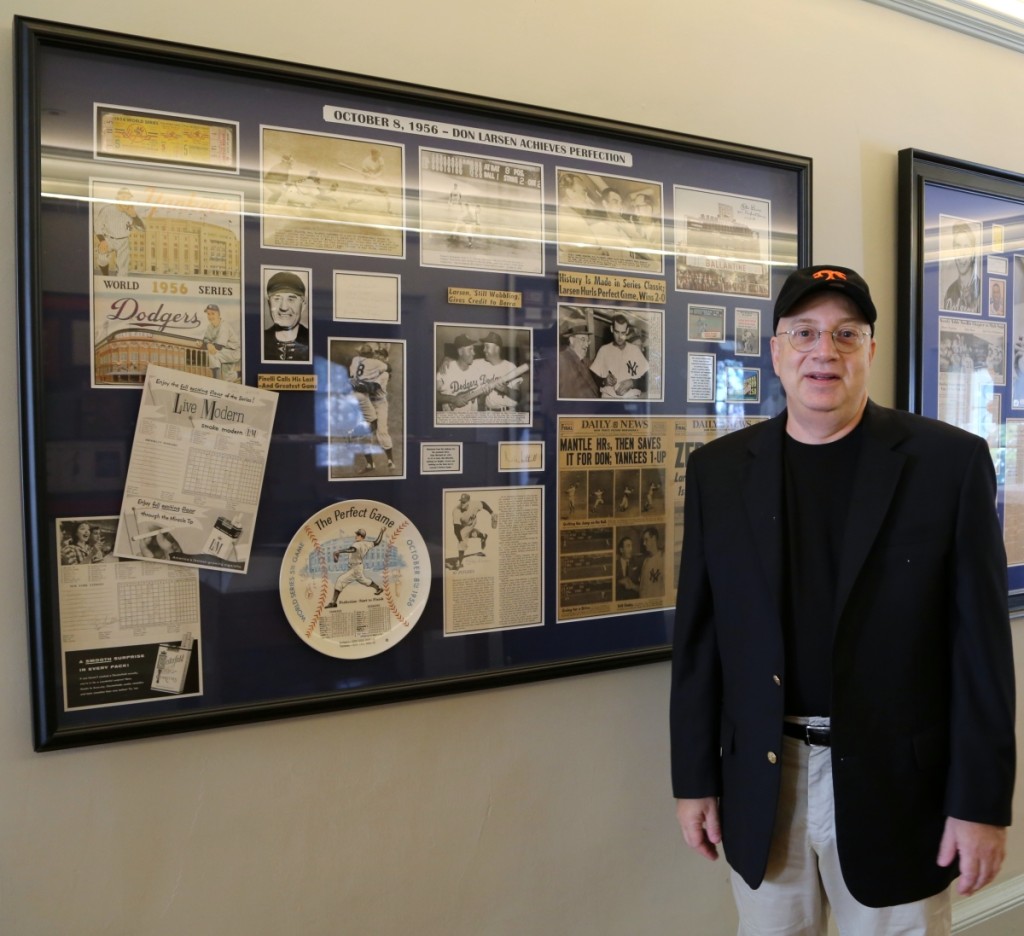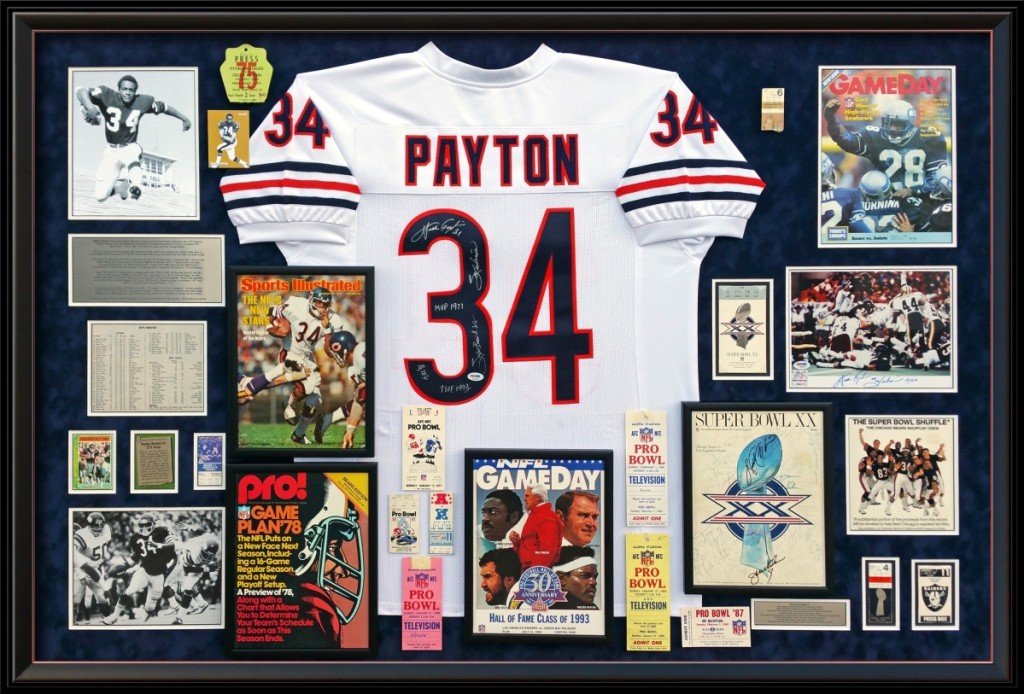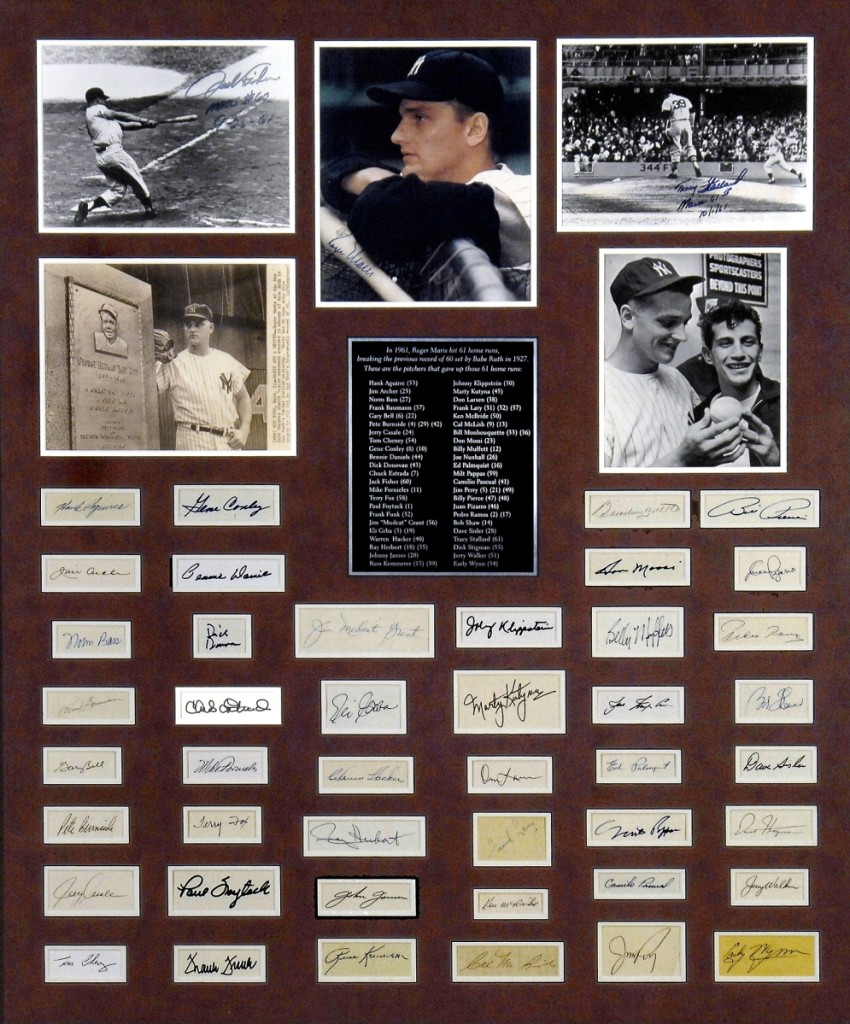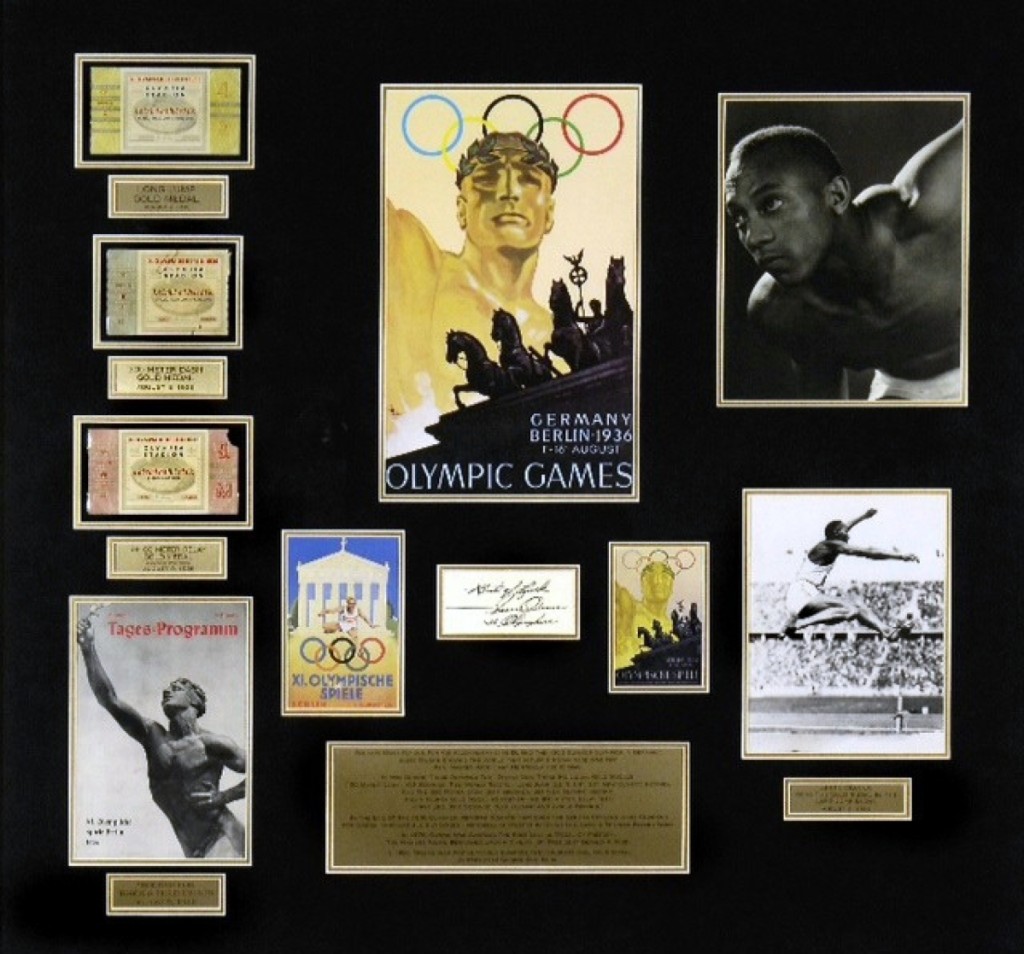Neil Scherer’s passion for sports began at an early age, in a familiar rite of passage for most boys who learn about sports from their fathers. He embraced the great games of baseball, basketball and football and acknowledges that one of his earliest recollections is that of his father explaining a 1966 game in which the Redskins defeated the Giants 72-41. That game would become historic and still holds the record for the largest scoring game between two teams. Eventually, Scherer developed a love for antiques as he learned about the history and the uniqueness of the decorative arts his parents acquired on family vacations throughout New England. Armed with a law degree, a brief career as an attorney accidentally evolved into an art dealer when he sold a painting his father owned to Hammer Gallery. He found he loved traveling around the country, making contacts with and selling to dealers and curators. Scherer has combined his love of art and sports by creating customized works that feature memorabilia from historic games. A collection of these works is on view at New York City’s Morris Jumel Mansion in “Home Plate: A Celebration of the Polo Grounds” through January 6. Scherer gave Antiques and The Arts Weekly a tour of the exhibition, which is a testament to his twin passions for both sports and art.
What is your term for these sports memorabilia assemblages?
I like to call them “sports conversation art,” which joins my two passions – sports and art, and which are dedicated to creating works of art that celebrate great moments in sports history. Our works include a range of rare authenticated artifacts including autographs, tickets, programs, photographs and press passes that when joined together tell the story of a particular sports event. These stories appeal as much to American art and history buffs as they do to sports fans. After all, one can reasonably argue that sports history is American History. They also set us apart from the more tradition single-item memorabilia world.
How did you conceive of the idea?
It was in 2004, during the American League Championship games between the Yankees and the Boston Red Sox. Despite a seemingly insurmountable 3-0 lead, the Yankees lost to their rival when the Red Sox stunned the Yankees and the sports world by rebounding with four straight games, ultimately going on to win their first title in 86 years. I was at the epic game and remained in my seat through the final out. Though personally devastated, I knew that my best friend’s father, who was in poor health, happened to be a huge Red Sox fan. I thought he might appreciate a framed ticket stub from the game.
Did it go over well?
It wasn’t long before I received a phone call from my friend, who also happened to be a collector of fine art. ‘Gosh, Neil, this is the greatest gift I have ever received! Don’t tell my wife but if it was up to me, I would take down my Hopper and Mondrian and place this ticket in the place of honor it undoubtedly deserves.’ He was probably partly joking but I thought if I could capture the passion for these great moments in a unique way, it would resonate with many Americans. My friend’s enthusiasm prompted me to consider that all significant moments in sports appeal to our sense of greatness and are deserving of being recalled again and again. And what better way for a moment to be immortalized, I thought, than to be captured in a frame.
What was the first “conversation” you assembled, and what was the inspiration for that?
One of our first works celebrated Roger Maris and his 61 home runs that broke Babe Ruth’s record. It was in 2011, which was the 50th anniversary of that epic moment. We were able to get every pitcher’s autograph who Maris got a hit against, as well as images of his first and 61st home runs. We also note how difficult the season was for Maris, when he would be booed by fans who wanted Ruth’s record to remain intact.
I have always liked the concept “Made In America.” I contacted Steuben Glass, whose products were made in Corning, N.Y., and which had its flagship store on Madison Avenue in New York City. Steuben had just signed an agreement with Major League Baseball to award the All-Star Game Most Valuable Player a glass bat. Steuben granted my company, GoingGoingGoneSports, the entire lower floor gallery space as a complement to their specialty sports items. Scheduled as a single month exhibition, it was so well received by customers and patrons that it was extended for almost a whole year and appropriately called “Extra Innings.”
Did you always plan to sell your conversation pieces?
No. At first, I planned to keep these works for myself. At the time, I was working with some real estate agents who from time to time would borrow artwork from me. One agent saw the Maris piece and although she was not a sports fan, she thought it was interesting. After the open house, she called me and said she was shocked how everyone was in awe of the piece and took photos of it and wanted to know if it was for sale or does the tribute come with purchase of the house. I realized at that time that it was registering with not just sports but art and history lovers, or as we call it, our triple play. It was then that I decided I might consider selling them.
How long does it take to put these together?
Most of our works take from six months to years to complete. Besides acquiring the items, the process includes authentication, then there is maybe another six weeks for framing and matting.
Are all of these assembled on commission?
The short answer is “no.” Most of our pieces come about as I find myself acquiring an autograph list of a championship team, like the 1961 Yankees or 1938 New York Giants. Most of these items spring up or I find by just combing auctions or going to estate sales. I just never know what tomorrow will bring, and I always keep an open mind as to what I could do with this item. Recently, though, we have started to handle commissions. For example, a football fan asked us to create a work celebrating his hero, Walter Payton. He gave us a week to give our “thoughts and wish list,” which he agreed on and told us to go forward. Every month I would call him about our progress and possible suggestions for additional items. I think the collectors love the process. It took 18 months, but he loved it, which was very rewarding.
Have you ever had a commissioned conversation piece rejected?
We have been fortunate. We often allow clients to live with the work before finalizing the acquisition. With regards to our sports displays, we are close to 100 percent in completing the sale. I think the buyer recognizes he has something unique, and hearing positive and enthusiastic feedback from friends and neighbors probably erases any doubts the collector might have.
Do you enjoy having a specific focus for searching out sports collectibles and archival material?
I have several ideas for projects. For example, I have been working for more than five years on a work celebrating Wilt Chamberlain’s 100-point game, which I believe is the greatest single game accomplishment in all of sports. I’m also working on a piece focusing on the 1938 NFL champion New York Giants, so if an autograph from one of those players comes up, I’d be interested in it.
Is the overall value of a collection more valuable than the sum of its intrinsic parts?
That is my position. Memorabilia collectors may compartmentalize the value of each item and come up with a different valuation and may not be my ideal client. However, most of my clients agree with my view that the work grows exponentially as more and more items are included, especially rare items. Also, most recognize the research and time spent, which often takes years. One memorabilia dealer told me he would go crazy spending so much time on a single tribute. They generally like to find an item and flip it which is probably smarter, but I think our work appeals as much to an art and history audience and not just the memorabilia world.
Are you the only ones who do these?
I believe our work is one of a kind and some recognized sports personalities have used the word “unique” to describe our approach. Our clients love the idea of having something unique, and almost every buyer has said his house is now the most popular house on the block.
The exhibition at the Morris Jumel Mansion includes primarily baseball-themed “conversations” but also some focus on football. Have you done “conversations” focused on other sports?
Yes. In addition to the Wilt Chamberlain 100-point game conversation I’m working on, I’m also developing one for a piece, as well as my personal favorite team, the 69-70 Knicks with Walt Frazier. We also have created some track and field pieces celebrating Jessie Owen and his Olympic achievements in 1936. I am always open to new projects and have recently had inquiries into horse racing and car racing, as well as soccer.
Do you consult experts in sports outside your own area of expertise?
I utilize the authentication services used by Major League Baseball and other experts during the authenticating process. Speaking as an attorney, getting our works authenticated and guaranteed is very important.
Do you find these collections appeal to both men and women or are your clients primarily men? Would you like to appeal to a broader demographic? How do you see expanding that demographic?
We are always expanding our fans and clientele. Sports remains so much a part of our culture and has arguably done more for integration then Supreme Court decisions. When Jackie Robinson broke the color barrier in 1947, it was a huge event not just for baseball but also for America. Jessie Owens became an American hero after winning the gold in Hitler’s 1936 Olympics
Soon, schools in Alabama, Mississippi, Tennessee, Georgia and Arkansas, and other schools in the South Eastern Conference would recruit African American athletes, but more importantly would accept black students and athletes that diversified the general student population. These are important American history stories we can tell through the history of sports.
As for visitors to the exhibition, it’s not uncommon for a woman to come by herself, or, when accompanied with her husband/boyfriend, for her to be the more interested party. This is becoming more and more the norm. After all, when you go to sporting events, crowds are more and more evenly attended by men and women. It’s not that surprising, as we see more and more women sportswriters, broadcasters and – soon, I expect – managers and club owners. You’ve got me thinking I should put a piece about Serena (Williams) on my list of future works.
Editor’s note: The Morris-Jumel Mansion is at 65 Jumel Terrace, New York City. For information, 212-923-8008 or www.morrisjumel.org. For information on a piece of sports conversation art, www.goinggoinggonesports.com.
-Madelia Hickman Ring








